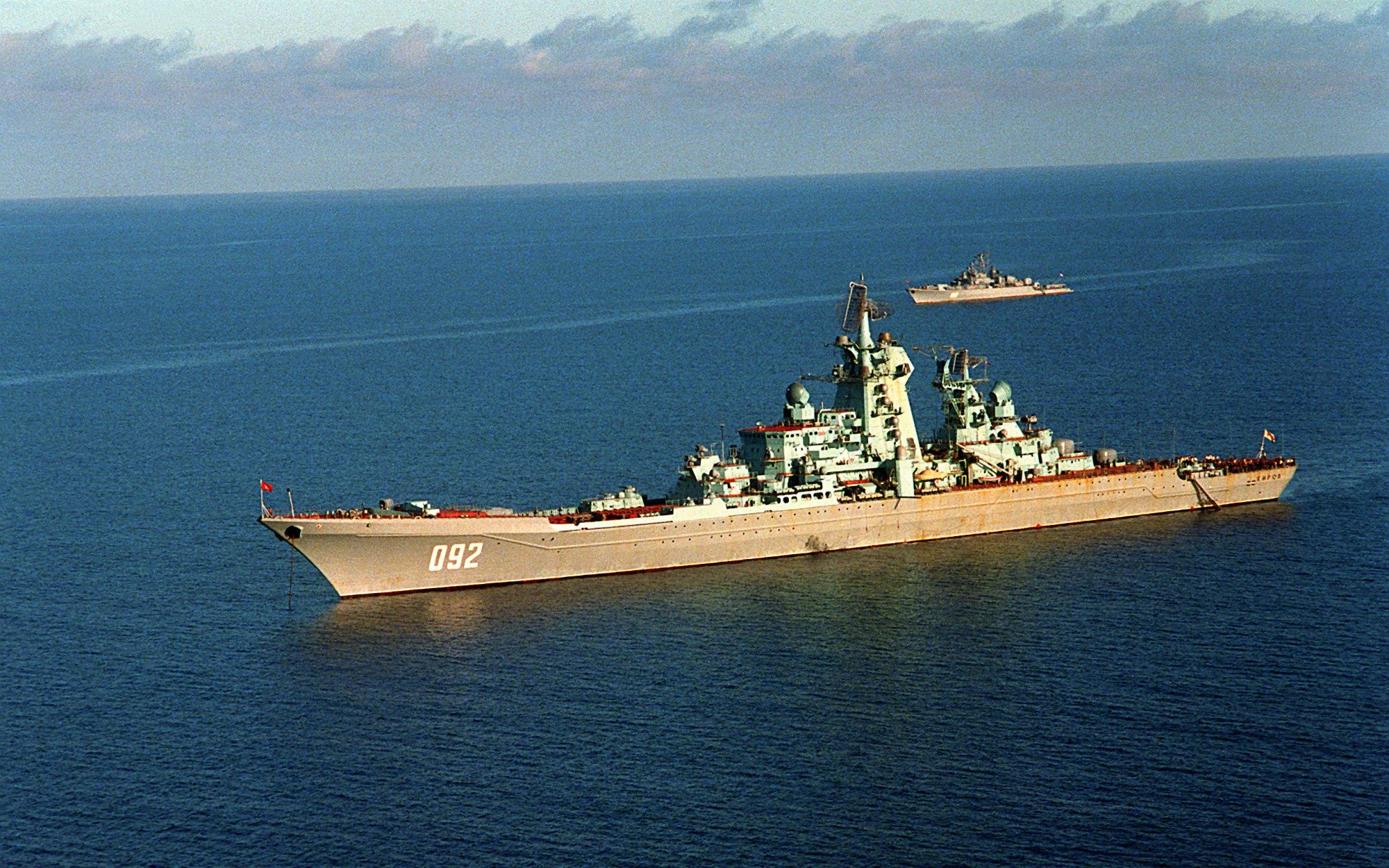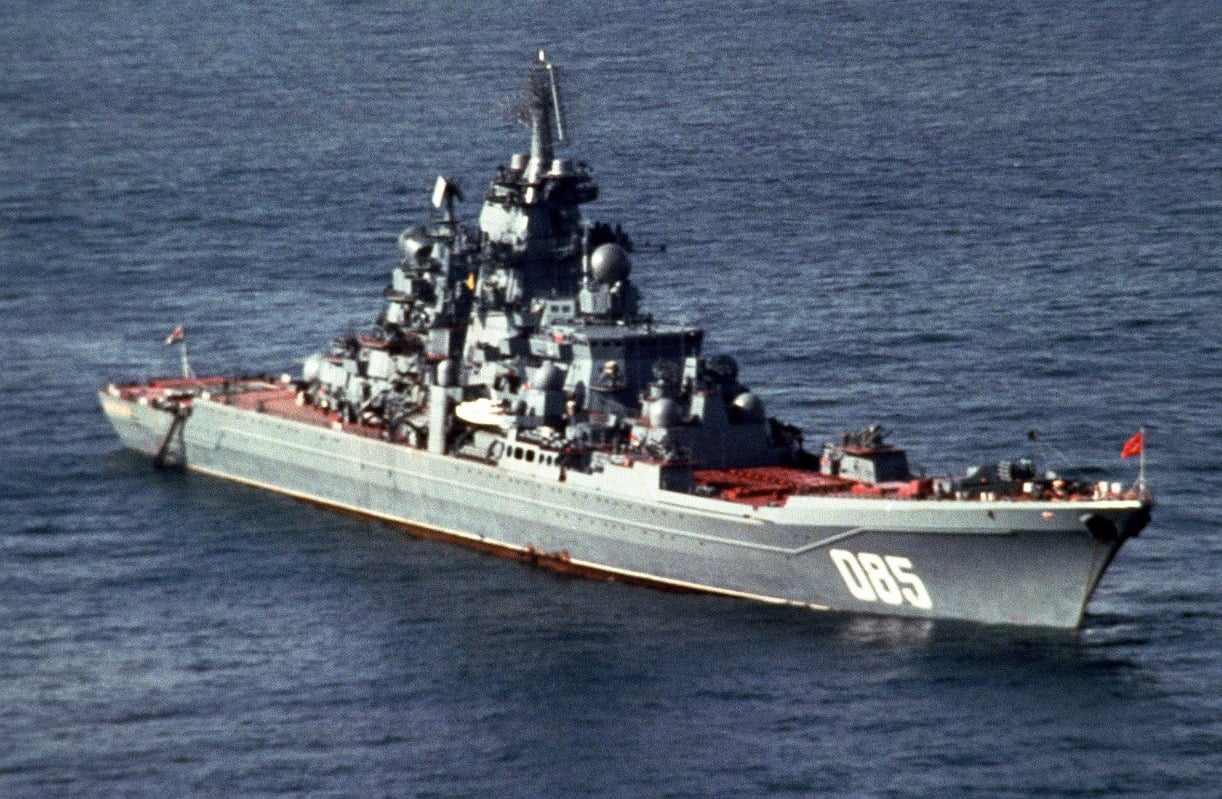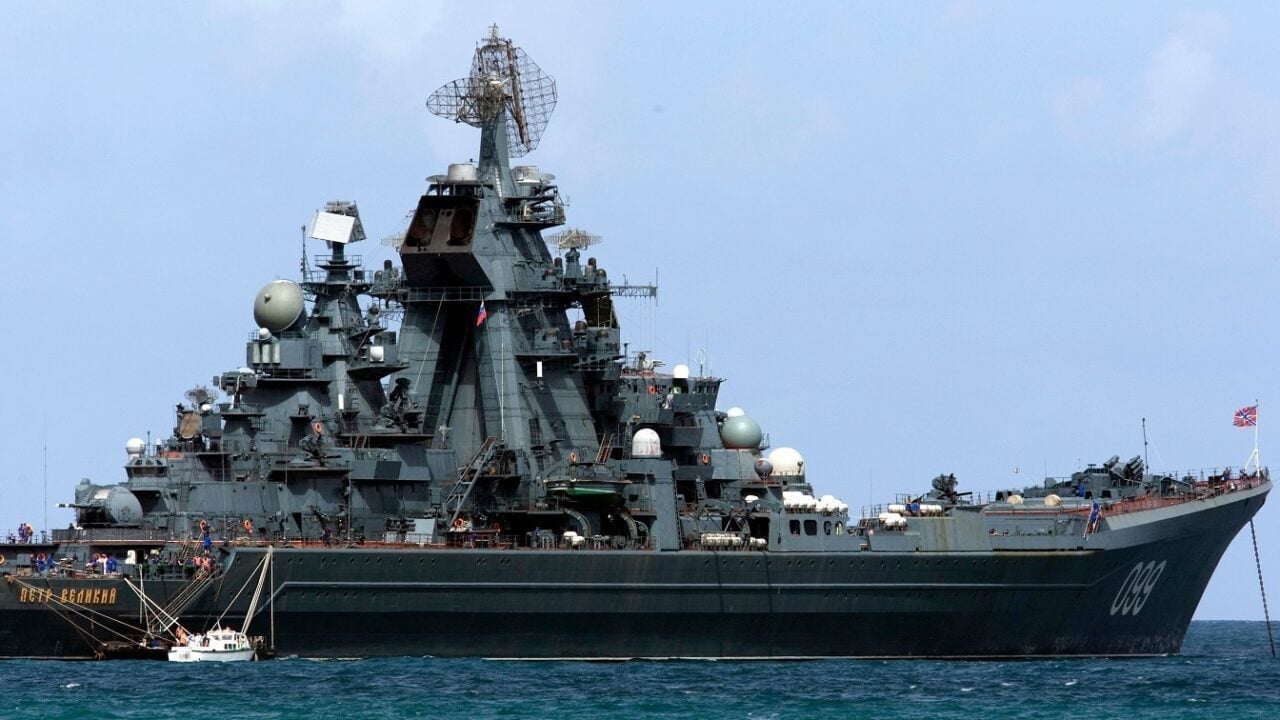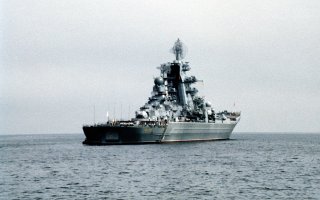Russia's 'Battlecruisers': Why the Kirov-Class Has That 'Sinking Feeling'
Russia's Kirov-class battlecruiser Pyotr Velikiy may soon be decommissioned due to high maintenance costs, a move influenced by the ongoing war in Ukraine.
Summary and Key Points: Russia's Kirov-class battlecruiser Pyotr Velikiy may soon be decommissioned due to high maintenance costs, a move influenced by the ongoing war in Ukraine.

-As one of only two remaining nuclear-powered surface warships in Russia's fleet, its retirement would leave the Admiral Nakhimov as the sole Kirov-class cruiser.
-The Admiral Nakhimov is expected to re-enter service within the next two years, potentially armed with Tsirkon hypersonic missiles.
-However, given Russia's history of overstating military capabilities, it's uncertain if the Admiral Nakhimov will live up to its billing as one of the most powerful surface combatants in the world.
Russia’s Last Kirov-Class Cruiser Faces Uncertain Future Amid War Costs
Each day Russia’s ongoing invasion of Ukraine continues, the Kremlin is funneling scores of resources into fueling its offensive efforts.
Experts estimate that Moscow has lost more than half of its main battle tank arsenal, in addition to loads of munitions, unmanned aerial vehicles and other military systems.
Crippled by hefty international sanctions amidst its ongoing war, the Kremlin is looking to make cuts where it can. In April, the Russian state-run news outlet TASS reported that the country’s Pyotr Velikiy battlecruiser may soon be decommissioned due in part to excessive maintenance and repair costs.
As one of two nuclear-powered surface warship in Russia’s Navy, the Pyotr Velikiy plays a significant role in the service. Strapped for cash, however, Moscow will likely retire this colossal sized vessel.
That is a shame, at least for Moscow, as these warships are pretty powerful.
Introducing the Kirov-class
Second in size only to large aircraft carriers, the Kirov-class nuclear-powered guided missile cruisers are the largest ships in Russia’s arsenal.
During the Cold War, the Kirov-class vessels were designed to counter American aircraft carriers. The Baltic Shipyard in Leningrad launched its warship in 1977. Four more vessels we laid down up until the collapse of the USSR. Initially, the boats were named to honor Bolshevik revolution heroes, but these names were changed to coincide with the end of the communist state.

Only two battlecruisers survived the dissolution of the Soviet Union and the financial woes of the Russian Navy- the Pyotr Velikiy and the Admiral Nakhimov.
Both ships are massive in size and can pack a punch. When designed during the Cold War, the ships were intended to function primarily as missile cruisers. However, over the next decade, the Soviets shifted gears and wanted the vessels to prioritize anti-submarine warfare instead.
In terms of air-to-air armament, these Kirov-class ships can sport 96 S-300F, 40 4K33, and 192 3K95 short-range surface-to-air missiles in addition to six Ak-630 close-up defense systems.
These battlecruisers were also fitted with various fire control radar, air/surface search radar, and hull-mounted sonar.

As detailed by one defense expert, “The propulsion system was a combination of nuclear power and steam turbine, with two nuclear reactors coupled to two oil-fitted boilers, which superheated the steam produced in the reactor plant to increase the power output available during high-speed running, while it also provided an essentially unlimited range.”
An Overview of Russia’s Two Remaining Battlecruisers
Both Pyotr Velikiy and the Admiral Nakhimov were expected to undergo repairs to enhance their capabilities.
However, reports now indicate that only the latter will actually make it past this phase.
As the latest move in a series of reductions to Russia’s sea-based fleet, this decision was likely influenced by the ongoing Ukraine war.
These hefty ships are pricey and Moscow could allocate resources planned for the Pyotr Velikiy to its offensive efforts in Kyiv.
The Admiral Nakhimov was supposed to return to service just two years after initially being laid up for refit back in 1997. Since the early 2000’s, a series of delays have pushed back this timeframe.
Within the last five years alone, Russian officials purported that the Admiral Nakhimov would re-enter service by 2018, 2018 and 2021.
The Altered Fate of Admiral Nakhimov
Latest estimates indicate that the Admiral Nakhimov is expected to re-enter service with the Russian Navy over the next two years. Analysts predict that country’s sole remaining Kirov-class cruiser will serve under the Northern Fleet.
As explained by Bulgarian Military, this move will reflect “the Russian Navy’s Arctic region prioritization due to its emerging importance as a key trade route and geopolitical battleground. The Northern Fleet’s positioning also allows the warship to contribute significantly to Russia’s strategic missile defenses.”
While exact details concerning Admiral Nakhimov’s refitting remain unclear, industry experts predict the ship will feature Russia’s new Tsirkon missiles which are currently under development. Earlier this year, Putin sent a frigate to the Atlantic Ocean with this new generation hypersonic cruise missile in tow. According to Russia’s defense minister, the Tsirkon (or Zicron), is capable of overcoming all missile defense systems and can fly at speeds reaching Mach 9.0 with a range of over 1,000 km.
While the Admiral Nakhimov’s claimed firepower would make it one of the most potent surface combatant ships globally, the Kremlin does have a history of exaggerating the true capabilities of its military systems.
This spring, Moscow deployed its top-of-the-line T-14 Armata to Ukraine. Widely touted to be the most formidable tank to ever trek across the battlefield by the Kremlin, the tank’s service in the war was short-lived.
By summertime, Moscow withdrew its Armata tanks from the conflict, despite its already dwindling available tank arsenal. Obviously, the T-14 did not perform up to standard. Once the Admiral Nakhimov re-enters service with the Russian Navy, only time will tell if the ship’s claimed capabilities are realistic.
About the Author: Maya Carlin
Maya Carlin is an analyst with the Center for Security Policy and a former Anna Sobol Levy Fellow at IDC Herzliya in Israel. She has by-lines in many publications, including The National Interest, Jerusalem Post, and Times of Israel. You can follow her on Twitter: @MayaCarlin.
All images are Creative Commons or Shutterstock.
From the Vault
Russia Freaked Out: Why the U.S. Navy 'Unretired' the Iowa-Class Battleships
Battleship vs. Battlecruiser: Iowa-Class vs. Russia's Kirov-Class (Who Wins?)


